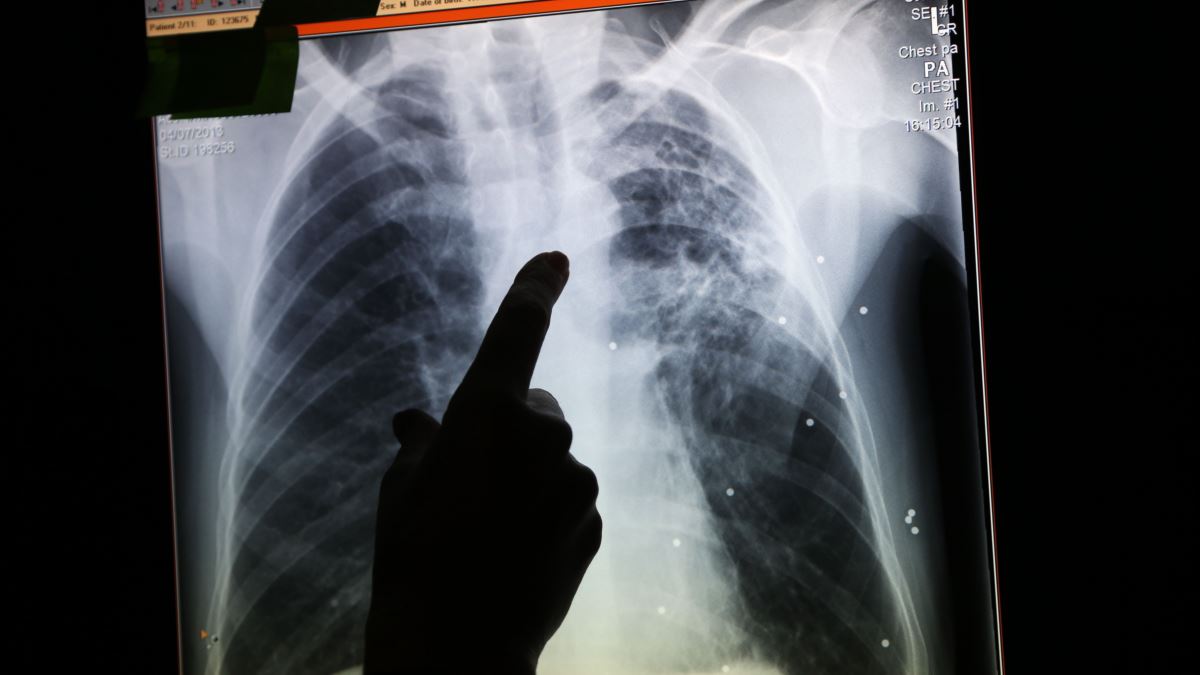Pulmonary tuberculosis is one of the types of tuberculosis with the highest prevalence. Tuberculosis can be transmitted through the air and droplets infected by Mycobacterium tuberculosis from one individual to another. According to data from the Ministry of Health in 2017, in Surabaya there were 2330 cases of pulmonary tuberculosis, consisting of 1384 men and 946 women. Treatment of pulmonary tuberculosis is in the form of a combination of antibiotic drugs given in two phases of treatment, the intensive phase (two months) and the advanced phase (more than two months).
In some cases of pulmonary tuberculosis, in the oral cavity, a fungal infection called oral candidiasis is often found. Long-term use of anti-tuberculosis drugs can increase the risk of developing oral candidiasis. Pulmonary tuberculosis patients undergoing treatment with anti-tuberculosis drugs often feel discomfort in the oral cavity, such as a thick feeling on the tongue. The use of anti-tuberculosis drugs can increase the risk of oral candidiasis due to the formation of Candida colonies, especially the types of Candida albicans.
This research was conducted on patients with pulmonary tuberculosis who underwent treatment with anti-tuberculosis drugs in Dr. Soetomo Surabaya from July to October 2017, there were 7 pulmonary tuberculosis patients with category 1 and category 2 anti-tuberculosis drug treatment. The results obtained from 4 patients with category 1 anti-tuberculosis drug treatment and 1 patient with category 1 anti-tuberculosis drug treatment, 2 were found with presence of Candida albicans. Meanwhile, another species of Candida, namely Candida glabrata, was found in 1 patient treated with category 1 anti-tuberculosis drugs.
The use of anti-tuberculosis drugs may be one of the causes of yeast infection in the oral cavity. Pulmonary tuberculosis patients who are given anti-tuberculosis drugs, for example the fifampicin type, have a wider antibiotic activity than other types of anti-tuberculosis drugs. Most Candida albicans infections were found in patients on category 1 anti-tuberculosis treatment. Category 1 anti-tuberculosis drugs consist of a combination of rifampicin, pyrazinamide, ethambutol and INH. The use of Rifampin for 6 months can increase the number of Candida albicans colonies and increase the ability of Candida albicans to invade the tissue due to an increase in the Multi Drug Resistance 1 Receptor protein (MDR 1). Rifampin is bactericidal against Mycobacterium tuberculosis and several other bacteria such as Lactobacillus acidophilus.
Under normal circumstances, Lactobacillus acidophilus is able to inhibit the growth of Candida albicans through bacteriocin mechanisms such as acidocin, Lactacin B, Lactacin F, lactic acid and H 2 O 2 which can damage the permeability of Candida albicans membranes, but when the proliferation of Lactobacillusacidophilus is inhibited by anti-tuberculosis drug activity, the bacteriocin mechanism by Lactobacillus acidophilus will also not be optimal. The study concluded that the Candida species most commonly found in pulmonary tuberculosis patients with anti-tuberculosis drug treatment is Candida albicans.
Author: Adiastuti Endah Parmadiati, drg., M.Kes., SpPM (K)
Details of the research can be viewed in our work: AEParmadiati, B. Soebadi, HT Hendarti, S.Winias, NFAyuningtyas, N. Radityarinidan Novitasari. Distribution Of Candida Spp In Pulmonary Tuberculosis Patient Treated With Anti-Tuberculosis Drug In The Dots Polyclinic Dr. Soetomo General Hospital Surabaya. Biochem. Cell. Arch. 2020; 20 (Supp 1): 3055-3059.





